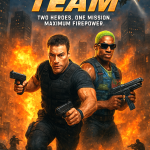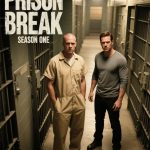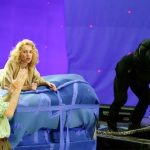FRIDAY THE 13TH

“Friday the 13th” is the film that helped define the slasher genre and gave birth to one of horror’s most recognizable franchises. Set at the seemingly idyllic Camp Crystal Lake, the movie follows a group of young counselors preparing to reopen the long-abandoned summer camp—unaware that a dark past still haunts the woods. One by one, they fall victim to a mysterious killer, leading to a chilling and unforgettable climax.

What makes this film stand out is its raw atmosphere. The setting is both peaceful and ominous, the woods becoming a labyrinth of fear as night falls. Director Sean S. Cunningham masterfully builds suspense, using silence, sudden noises, and point-of-view shots to keep audiences on edge. The now-iconic “ki-ki-ki, ma-ma-ma” sound effect, created by composer Harry Manfredini, heightens the tension, becoming forever linked to the franchise.
Unlike many later entries, the killer here is not Jason Voorhees—but his mother, Pamela Voorhees, driven by grief and madness after the drowning of her son. Betsy Palmer delivers a chilling performance that’s equal parts tragic and terrifying. The twist, though now well-known, was groundbreaking at the time and helped set the stage for Jason’s rise in the sequels.
The kills are brutal and creative, with practical effects by Tom Savini that were groundbreaking in their time. From throat-slitting to axe attacks, the violence feels gritty and visceral, never relying on over-the-top gore but instead focusing on raw shock value. The pacing builds slowly, allowing the tension to simmer before exploding in the final act.
While the film has its flaws—some dated dialogue, stereotypical characters, and low-budget feel—it’s precisely these elements that add to its charm. “Friday the 13th” is not about deep themes or complex characters. It’s a ride—a visceral, blood-splattered ride into the heart of slasher terror.











